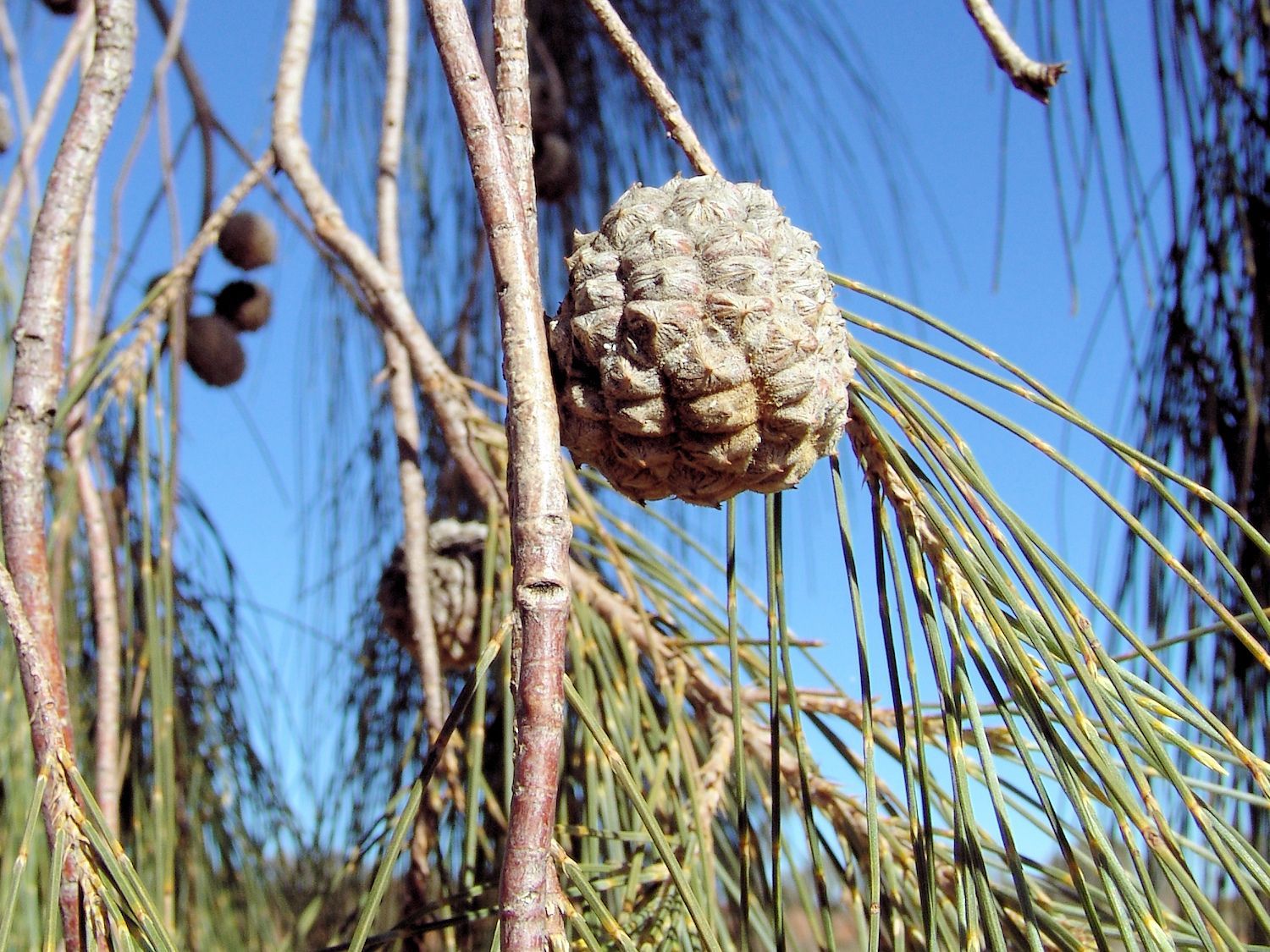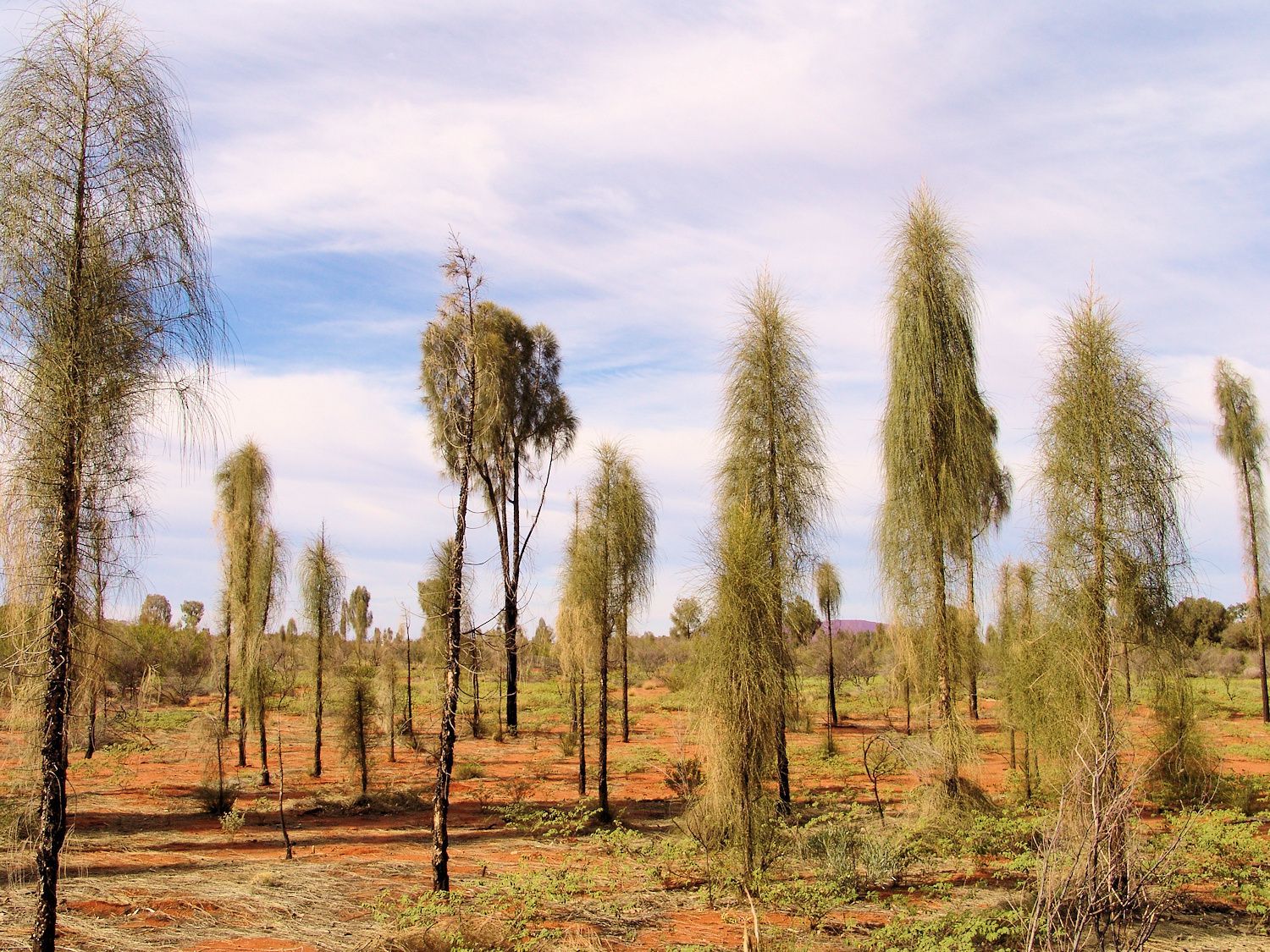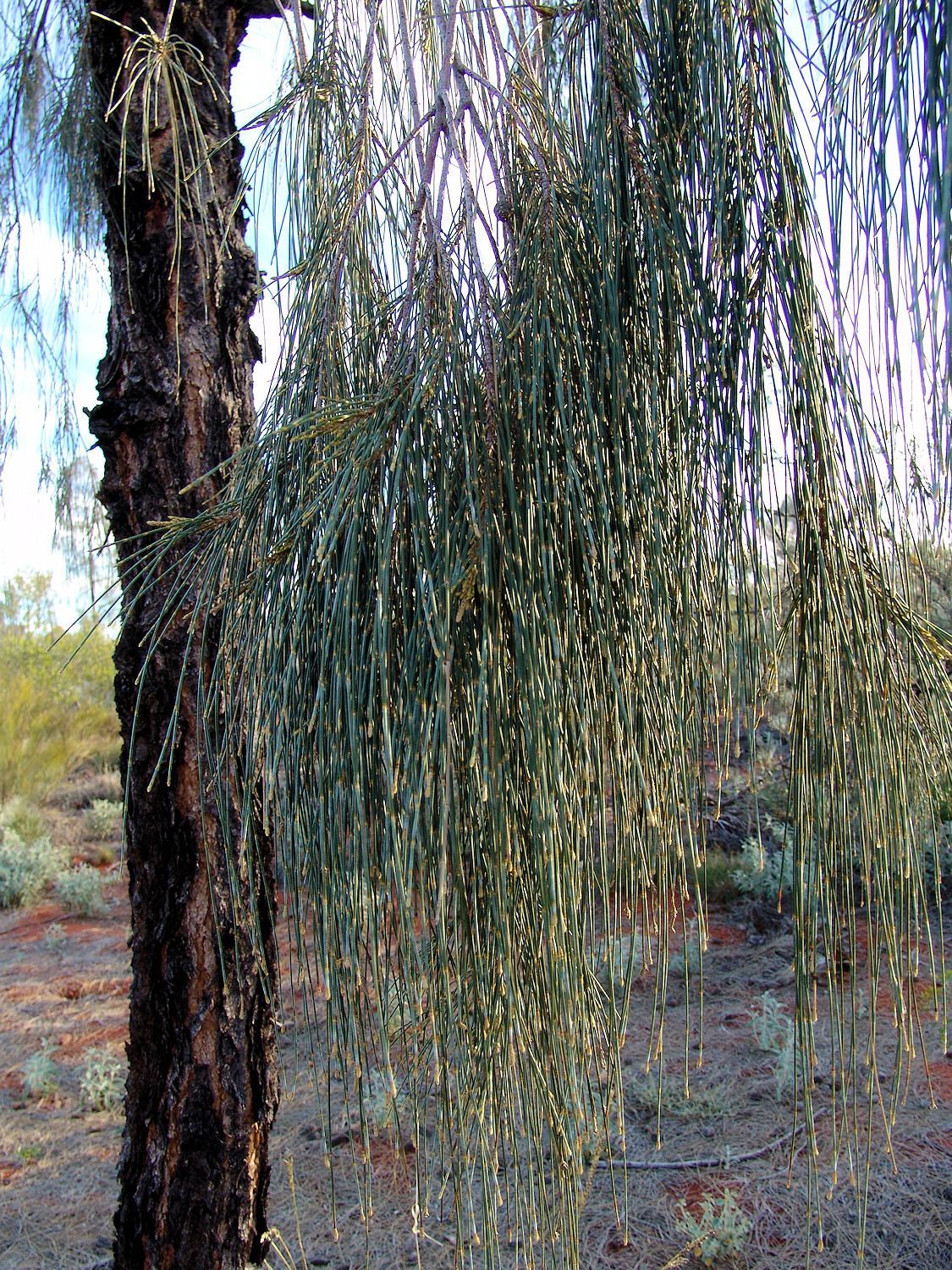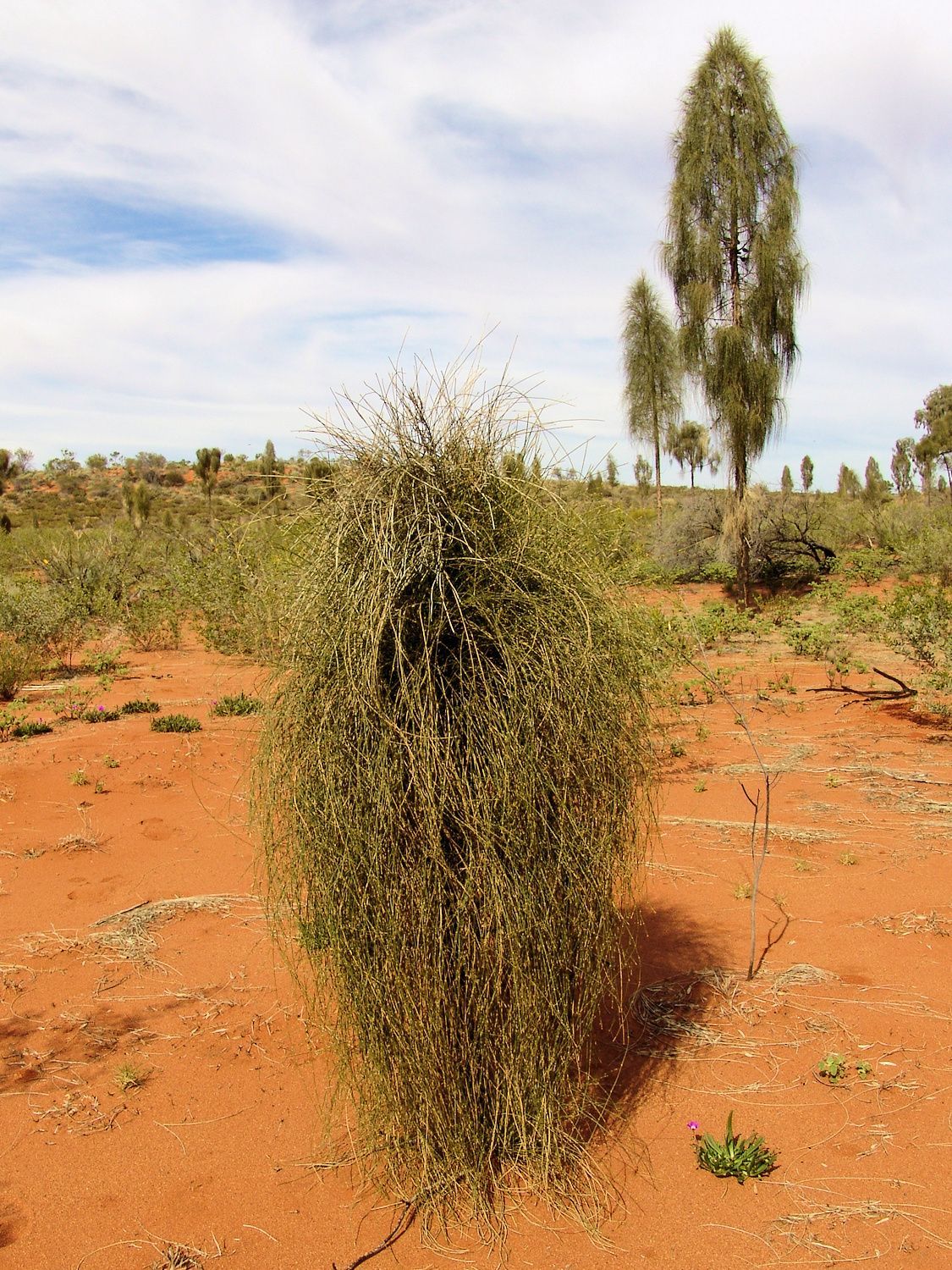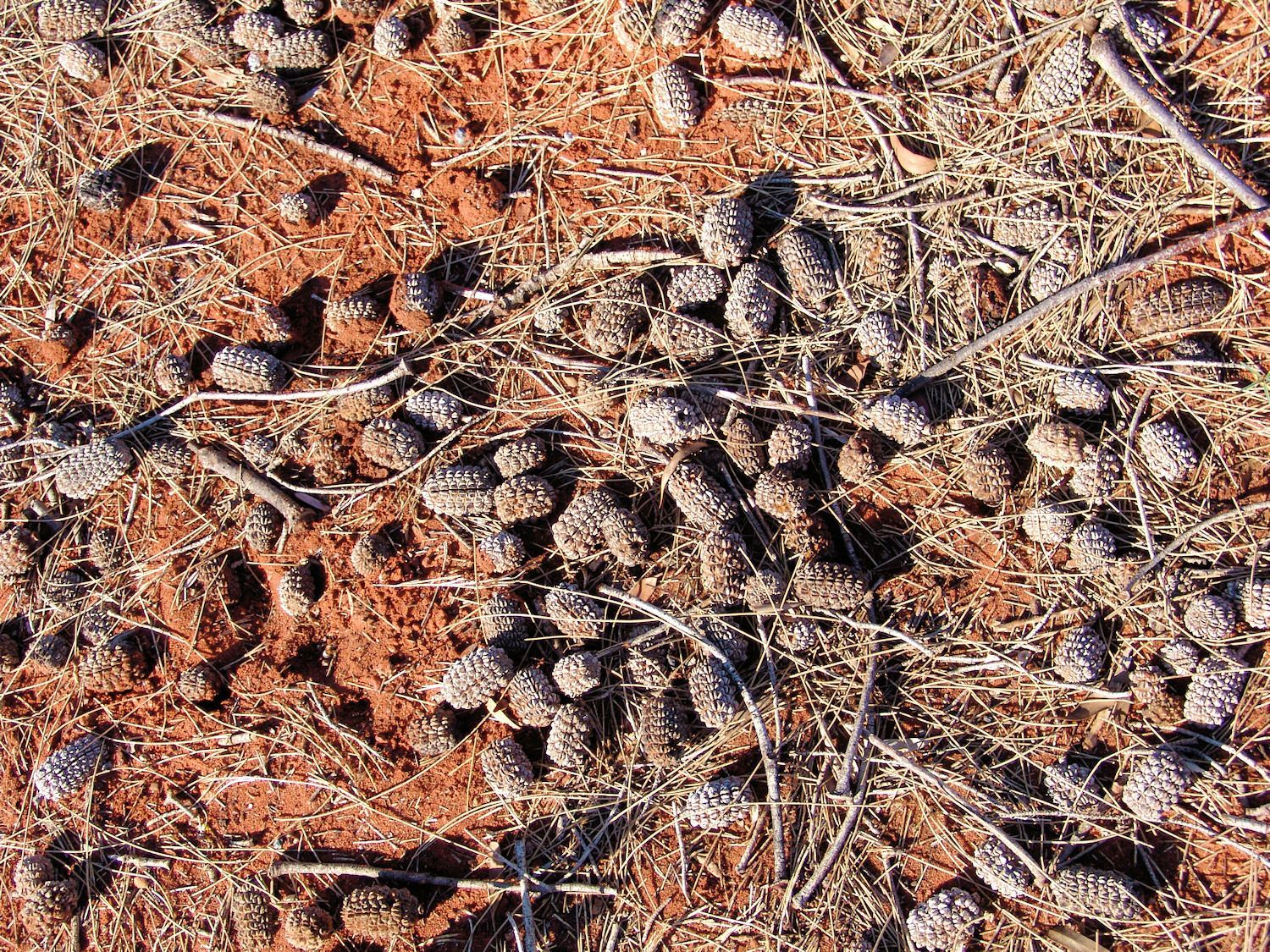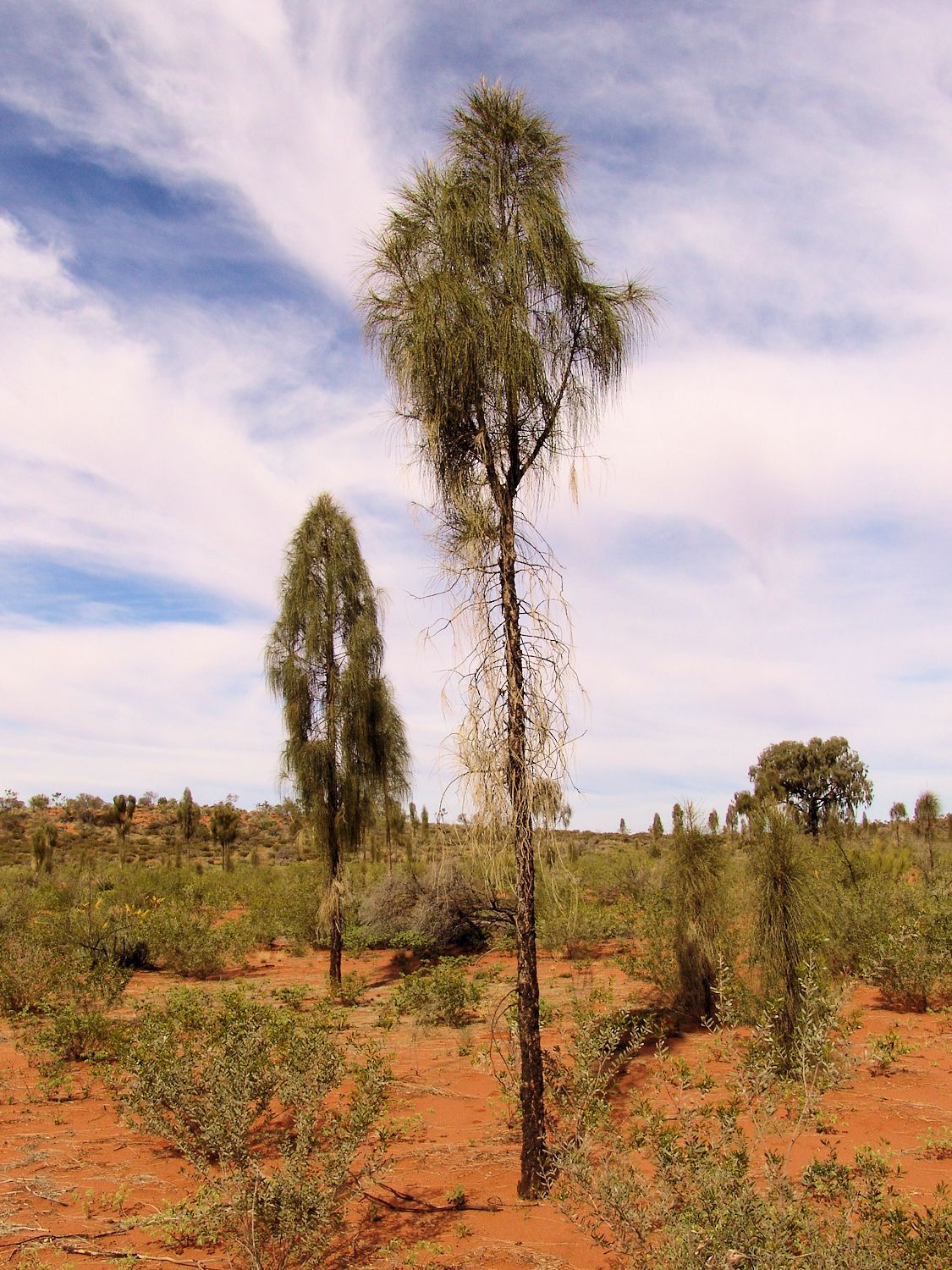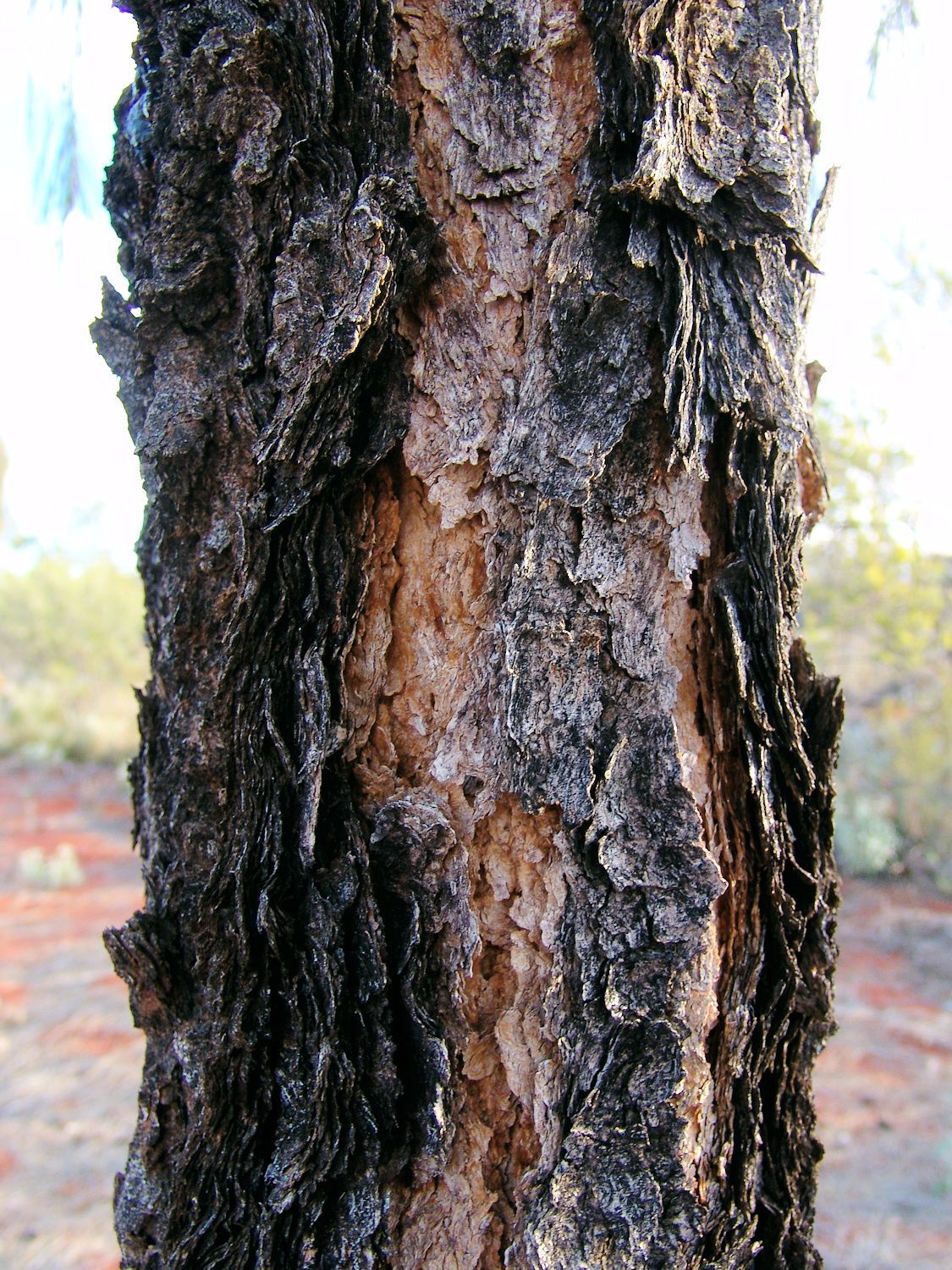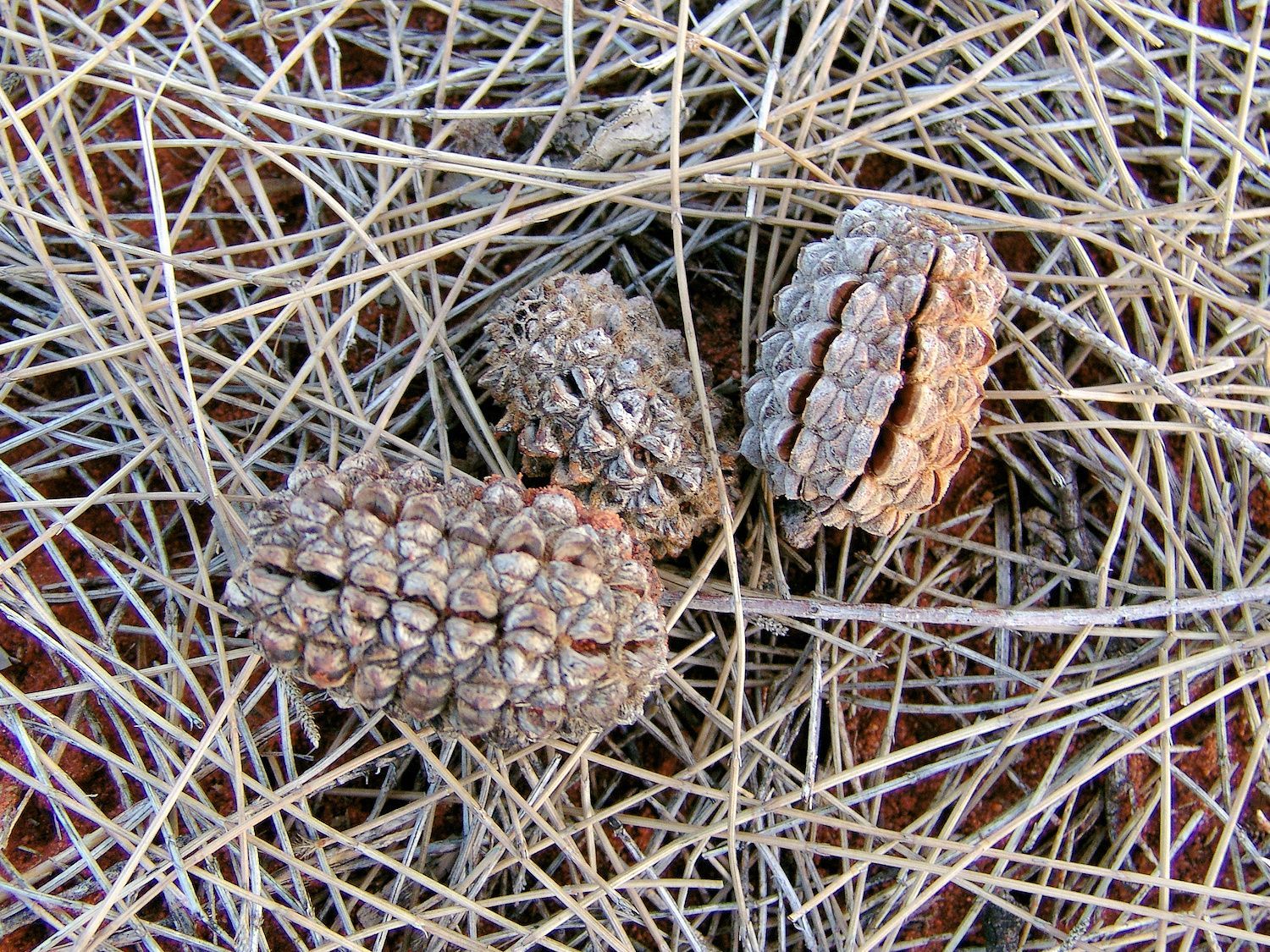Desert Oaks (Allocasuarina decaisneana)
By Colin Leel, 22nd January 2029
The Desert Oaks of Central Australia is a significant tree in Aboriginal culture.
The majestic desert oak tree is one of Central Australia’s iconic trees and plays a significant role in Aboriginal dreaming. The Desert Oaks offers shade in Mina Mina country, an important women’s dreaming site where they gather for ceremonies, and is found painted into aboriginal art of the central and western deserts. It is a major subject and can be found depicted in the works of artists from art centres such as Warlukurlangu in Yuendumu as the central story, “Desert Oak Dreaming”.
Internationally renowned artist Dorothy Napangardi references the desert oak in many of her major works.
"During the Jukurrpa (Dreaming) ancestral women of the Napangardi and Napanangka sub-section groups (aunt / niece relationship, in which knowledge is passed from one to the other) gathered to collect ceremonial digging sticks that had emerged from the ground from the desert oak trees (Allocasuarina decaisneana) which continue to grow today."
The kurrkara (desert oak) and Kurrkara Jukurrpa (Desert Oak Dreaming) often reference a major women’s ceremonial site known as Mina Mina. As custodial owner of Mina Mina, many of Dorothy Napangardi’s artwork depicted her “Country” of Mina Mina.
Other artists such as Judy Napangardi Watson often depict the Ngalyipi (snake vine), which grows along the trunks and boughs of desert oak. This vine is sacred to Napangardi and Napanangka women.
The desert oak tree (Allocasuarina decaisneana) is a majestic looking tree reaching up to 12 metres in height, when mature. It has a thick, dark brown bark, that is deeply fissured. Combined with its long needle like foliage and woody cone fruit, what makes this plant even more distinctive is the juvenile form of the tree. In its juvenile state, the young tree has an erect thin, straight truck with numerous branchlets growing out of it and bear a resemblance to a feather duster. It bears male and females flowers that are borne on separate trees (dioecious).
The trees are often found in dense stands or forest, in arid desert region, often between red sand dunes. Visitors to the Uluru-Kata Tjuta National Park and Rainbow Valley can see some fine examples of these trees in their different stages of growth.
The foliage in the juvenile tree is prickly, deterring grazing animals from eating it. During this early stage the juvenile plant send down a strong tap root, searching for the water table and a more reliable water supply. They then start to change into their adult form of the tree sending out side branches and transforming into the weeping form.
The trees themselves have a number of other adaptations for survival, especially after fire. These include a thick bark and the ability to produce epicormic shoots (this type of growth regenerates from an epicormic bud that lies underneath the bark of the tree), and the production of a huge amount of seeds, that like other Australian plants are assisted by bush fires in germination.
GALLERY GONDWANA
ABN: 75 009 652 046
All prices displayed in AUD, GST included.
Gallery Gondwana acknowledges the First Peoples of this land and recognises their continuous connection to culture, community and Country.
CONTACT US
+61 417 75 74 75
+61 417 27 44 31
roslyn@gallerygondwana.com.au
PO Box 3770, Alice Springs NT 0871 Australia
Vatu Sanctuary
Saturate yourself and be inspired by the power of Aboriginal art in a living gallery environment.

All Rights Reserved | Gallery Gondwana
